Children have rights that have been enshrined in the UN Convention on the Rights of the Child since 1989. These include the right to health and the right to play and leisure. But a lot has changed since then. The rapid development of digital media and technologies has significantly changed the way children grow up. Digital media play an important role from an early age. We explain the key aspects of children’s rights in the digital world.
The digital world encompasses various digital technologies, from the internet and mobile devices to online games and social media. All children’s rights apply everywhere. Some rights play a special role:
Every child has the right to unrestricted and equal access to the digital world. However, this does not mean that children should use media without restriction. Depending on your child’s age and stage of development, you as parents can agree rules with your child on how long and which media may be used.
Like adults, children also have the right to freely express their opinions and obtain information. The Internet offers children the opportunity to obtain age-appropriate information in a variety of ways and to express and disseminate their own opinions. Make sure your child only accesses websites that are safe and suitable for children.
Every child has the right to privacy. As parents, you should therefore be aware of and considerate of your child’s personal rights on the Internet. Avoid disclosing personal data such as your child’s name or address. Ask your child for permission before you post photos of them online or send them via Messenger. Respecting your child’s privacy also means not checking your child’s smartphone out of curiosity. If you are concerned about your child, seek a trusting conversation with him or her.
Digital media offer children a wide range of opportunities to express themselves creatively, learn and network with their peers. Encourage your child to explore age-appropriate platforms such as the Knipsclub photo community and digital play worlds. Ensure a good balance with other activities. Encouraging creative play in the digital world allows your child to develop their imagination.
Every child has the right to equal access to education. With regard to the digitalized world, support from the family, nursery and school is important so that children learn to deal safely and responsibly with the opportunities and risks in the media world. Today, the right to media access is also always a right to access educational media offerings such as playful learning sites.
Children’s rights focus on the best interests of the child. Children must be protected from all forms of violence, abuse and poor treatment (such as cyberbullying, cybergrooming and hate speech) in all areas of life, including the digital sphere. Special youth protection programs can help to minimize risks. Talk to your child about security risks and problematic content on the internet to empower them to protect themselves.
Children have the right to network online with their peers, share common interests and form digital communities. Parents should encourage their children to use online platforms such as the helpando help site or participation platforms that are designed to be age-appropriate, safety-conscious and promote positive interactions. This allows children to cultivate digital friendships and develop important social skills for life in an increasingly networked world – always aware of the challenges and opportunities that the digital environment offers.
Talk to your child about their rights. The family plays an important role for children’s rights in the digital space. As parents, you have the task of enabling your child to grow up well. This also includes teaching them basic media skills and values. Therefore, find out about your child’s media use, stay in contact and make (joint) decisions that are appropriate for your child’s age and development. Cooperative cooperation and a respectful and trusting relationship are the basic prerequisites for your child to turn to you as a contact person in the event of problems. Children need to know their rights. Only then can they claim them for themselves and stand up for them. Incidentally, your importance as parents for the development and well-being of your child is also expressly emphasized in the UN Convention on the Rights of the Child.
Further information on children’s rights can be found in a child-friendly format on Kindersache and at Deutsches Kinderhilfswerk .
In the digital world, children and young people are confronted with a variety of challenges. helpando is a trustworthy point of contact that provides support in difficult situations and informs children about their rights. This article introduces the digital help platform for children and young people.
helpando is a project of the KinderRechteForum (KRF). This non-profit organization has been campaigning for the realization of children’s rights for years. The helpando platform helps children and young people with any problem. The help team also intervenes when children’s rights are violated and informs children and young people about their rights in an understandable, child-friendly and empathetic way.
This uncomplicated help is available directly on the website or via WhatsApp, SMS, Facebook or Instagram Messenger. Phone calls and e-mails are also possible. The consultation is strictly confidential and free of charge.
Children and young people can also publish their case anonymously – and show others that they are not alone with their problem. The platform thus promotes the well-being and rights of children and young people.
helpando also helps to improve the situation of children and young people in a concrete and local way. Does your town need a new playground? Is there a lack of leisure facilities for young people? The school is still not barrier-free? The help platform can be used to post campaigns and draw attention to petitions. The helpando team provides support and contacts local authorities, for example.
The help platform also provides information about children’s rights and child-friendly events.
On Instagram and TikTok, helpando raises awareness of children’s rights, mental health and issues that children and young people are concerned about.
Take on a supportive and informed role and respect your child’s trust and autonomy. Help your child to seek support in difficult situations and show them digital help platforms such as helpando or similar services. Assist with making contact or seeking support if required.
Open and regular communication is crucial. Allow your child to express themselves freely and share worries, problems or concerns. This creates trust and makes it possible to react to potential challenges at an early stage.
Be aware that the online world is often a complex environment for children and young people. Respond sensitively and understandingly to your child’s challenges and problems.
It is exciting and beautiful to follow how your own child grows and develops. Thanks to smartphones, growing up can be permanently documented and shared with others. However, there are a few things you should keep in mind for the sake of your child. Answering the following questions will help you decide how to handle photos of your school-aged child.
Your child is probably used to being photographed from an early age. Maybe it likes it, but maybe not always and not in every situation. Be mindful of when and how you photograph your child, especially if you want to share the photo with others. When it comes to forwarding a photo, your child should also be okay with it. Think about whether you would have wanted certain photos of you as a child to circulate on the web.
Children should always be seen clothed in photos and not in a ridiculous or even embarrassing situation. If other children are visible in the photo, you must obtain their parents’ consent.
Consider whether it is always necessary to see your child’s face. We’ve put together some tips on how to take creative photos of children without being completely obvious about the child.
Children also have rights. They can and should have a say when it comes to themselves and their well-being. Photos on the web can violate children’s privacy. As a school child, your son or daughter is old enough to understand what it means when photos are shared on the Internet. Talk to him or her about it and don’t decide over his or her head. You should not publish a photo of your child without his or her consent!
If your child later takes and shares photos on their smartphone, they should know what the consequences can be. Educate your child in good time and, as a role model, handle the dissemination of photos sensitively yourself.
On the one hand, there is the question of the channel through which children’s photos can be shared and what permissions other people have to see these photos. There are platforms where children’s photos are collected from Facebook profiles, for example, and made available to others. Strangers can then use these photos for their own purposes – in the worst case, they are pedophiles.
The more people who can see your child’s photos, e.g. via the status function on WhatsApp, the more likely it is that they can simply be copied and forwarded and thus fall into the wrong hands. Therefore, use the privacy settings on the smartphone and in the respective app so that only a restricted circle can see the photos.
On the other hand, make absolutely sure that children’s photos are not published in combination with other information such as full name, place of residence etc. With the first photo on the web, your child gets a digital identity that becomes more and more pronounced over the years. Your child can’t undo that later.
If grandma and grandpa don’t live nearby, it’s nice for them to still get to see their grandchild grow up. It’s easy to do that with a photo via WhatsApp and the like. Nevertheless, you should agree on rules with family and friends when sharing photos via smartphone. You may consider settling on a messenger like Signal, where photos are not automatically saved to the recipient phone’s photo gallery. You may also agree not to share photos that show your child’s face at all, but only to show them in person.
New parents are especially proud of their own baby and would like to share their happiness with the whole world. But don’t lose sight of your child’s privacy rights . Answering the following questions will help you decide how to handle photos of your child.
Your child will only learn over time what photos are and what it means when images are shared online. Therefore, for the time being, you have to make the decision on how it should look like in photos and who is allowed to see certain images. Therefore, before you share a photo of your child that you find funny, for example, you should consider whether you would have liked it if your parents had shared such a picture of you.
Children should always be seen clothed in photos and not in a ridiculous or even embarrassing situation. If other children are visible in the photo, you must obtain the consent of their parents or legal guardians.
Photos of children can also be beautiful without showing them very clearly, e.g. by photographing them from behind or only showing a detail. For more tips on how to take and share beautiful children’s photos in a creative way without violating their privacy rights, see our post Creative Children’s Photos.
Also, think about the channels through which photos are distributed. When you post a picture on WhatsApp it can be forwarded easily and unnoticed, and may even end up in someone else’s hands. Then you don’t know what happens to it.
To avoid this, there are often various setting options in apps or on platforms that restrict visibility or the circle of recipients. Also regularly check your own privacy and security settings! Be sure to avoid posting a photo of your child in combination with exact details such as name or location.
The fact that you want to capture beautiful moments with your child and share them with others is quite normal and brings joy. But not every photo has to be shared or published on the Internet. It can be just as nice to show the pictures at the family gathering and enjoy them together. Discuss with family and friends how you would like photos of your child to be handled. (You can find suggestions for this at the German Children’s Fund, for example.) Because once photos have been sent via WhatsApp or other messengers, they can be forwarded easily and unnoticed. Tip: With messenger apps like Signal or Telegram photos are not automatically saved in the recipient’s photo gallery!
Discuss this with your partner or the other parent. But children also have a right to co-determination, privacy and to decide what happens to pictures of them. That’s why you should involve your child as early as possible. If it is still very young, you can ask if it likes itself in the photo before forwarding it. From kindergarten age, you should ask more precisely, e.g. whether grandma and grandpa are also allowed to see and have a picture. Respect your child’s decision, even if it is not your opinion.
Every day we experience unforgettable moments with our children: the first steps, the costume party with the best friends or the first trip to the zoo. Of course, we want to capture them and share them with others.
We should be aware of the way in which photos of our children circulate on the internet — whether on WhatsApp, Instagram, or otherwise on the net. After all, children also have a right to privacy and should be able to participate in decisions about what and how much of them can be seen on the internet, in line with their age.
Those who like to post photos of their loved ones should make sure that the face, surroundings and names are not clearly recognizable. We have collected a few creative ideas to still get beautiful and impressive photos:
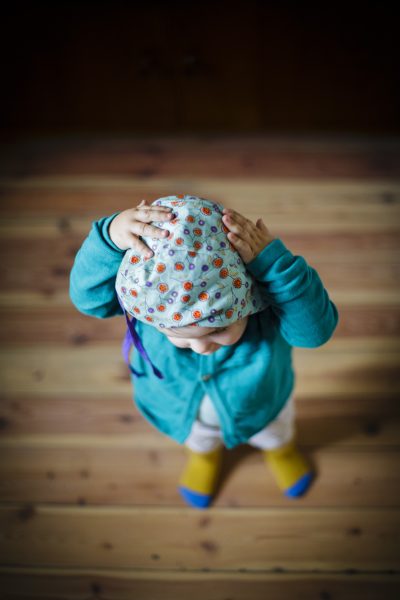
Copyright: Thomas Trutschel/photothek.net
Be creative about the camera’s angle of view. A child’s photo from behind, above or below can also be adorable!
If you change the perspective, it can emphasize the image effect. Often it is enough to stand on a stair step or a kitchen chair. However, make sure that your child’s face is not recognizable.
When you go to the child’s eye level, the background looks much more exciting and the viewer gets the feeling of seeing the world from the child’s point of view.
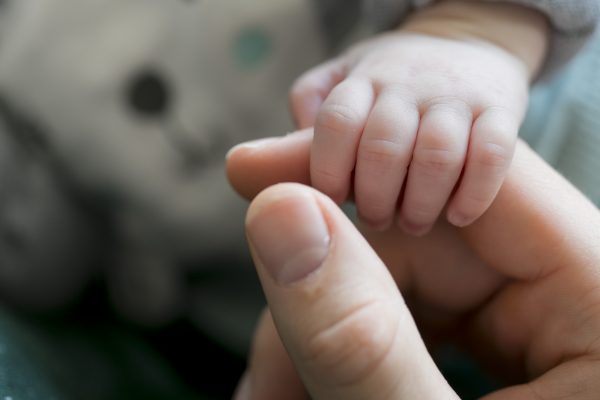
Copyright: Ute Grabowsky/photothek.net
Sometimes we get so busy trying to get everything in one picture at once that we overlook the little things altogether. Details can also tell a story and have an emotional impact.

Copyright: Ute Grabowsky/photothek.net
Interesting and creative photos can also be taken by shooting through other objects (e.g. leaves, fabrics, etc.) or working with water reflection, great puddle photos can be taken and the little ones have fun too!
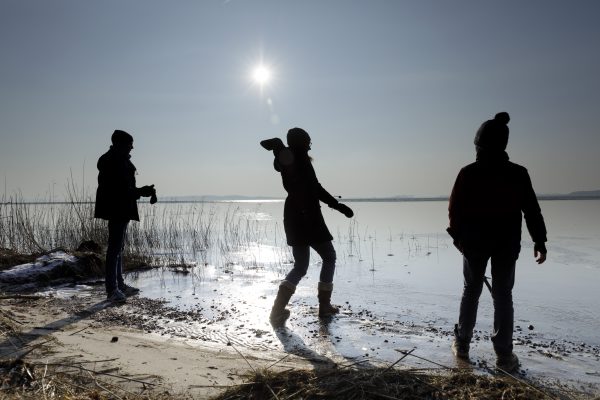
Copyright: Thomas Koehler/photothek.net
When you work with light and shadow, some photos look mysterious and exciting and others very artistic. Their advantage is that only silhouettes and no faces are visible.
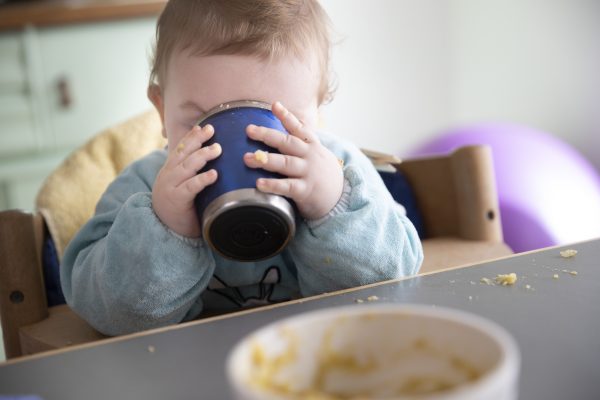
Image: photothek.de
You may be familiar with photos of children where the faces have been covered up with emojis after the fact. If you already remember when taking the photo that you don’t want children’s faces to be seen, you can cover them up in another way. Sometimes such photos are not intended at all and look natural, for example, when the child just holds his hands or an object in front of his face – as in our example.
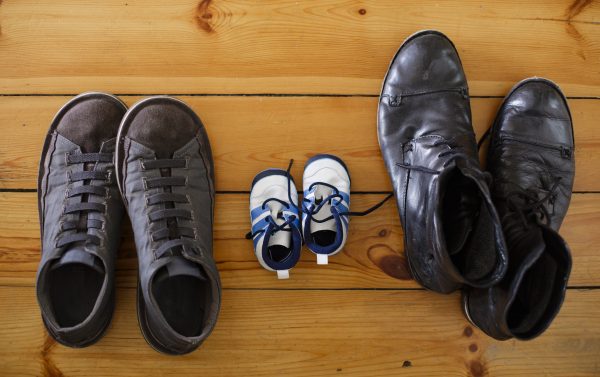
Copyright: Thomas Trutschel/photothek.net
Things can also tell stories, especially when you realize they have a connection to a person – like the shoes in our example photo.
Some of the effects mentioned can also be achieved by post-processing photos. For example, you can work with high contrasts and strong backlighting or play with depth of field. When creating a photo collage, images are sometimes displayed so small that the faces are no longer recognizable.
Involve your child as early as possible. Many children are used to being photographed. And looking at photos together on the smartphone is part of everyday family life for many. It is therefore a good idea to talk about the publication of photos on the internet at an early stage in a way that is appropriate for children. As early as elementary school age, children can discuss what the internet is and what it means when photos are published on the Net.
Whether and how much you or your child disclose about yourself on the internet is up to you. Above all, it is important to deal with the topic. Both parents and children should be aware of the consequences of posting pictures of themselves and others on the internet. Our article on children’s photos on the internet can serve as a stimulus for a joint discussion.